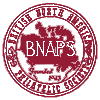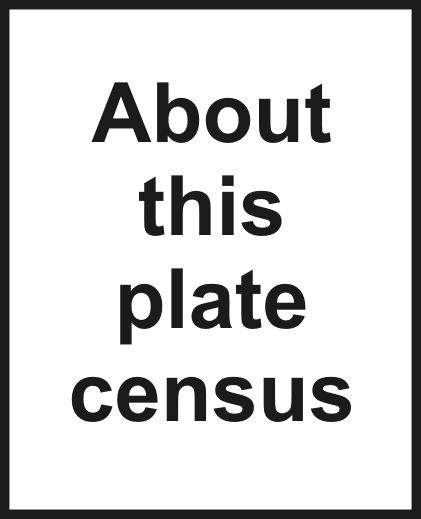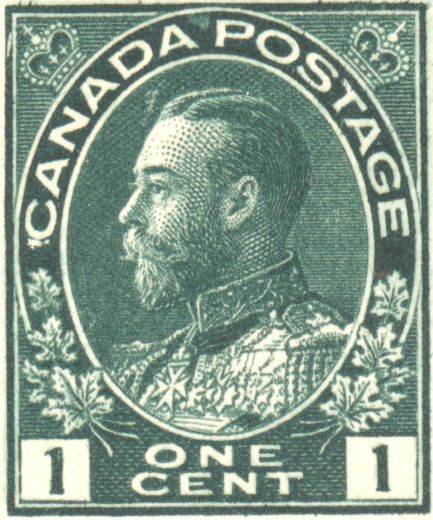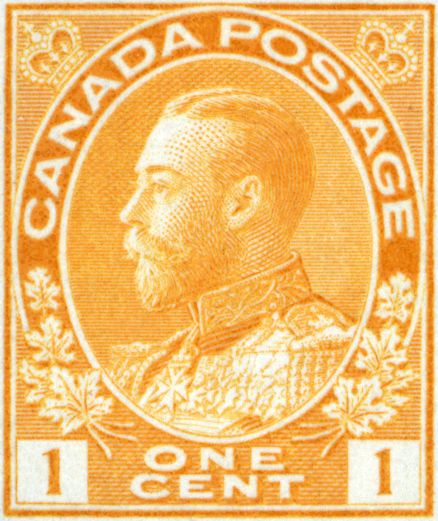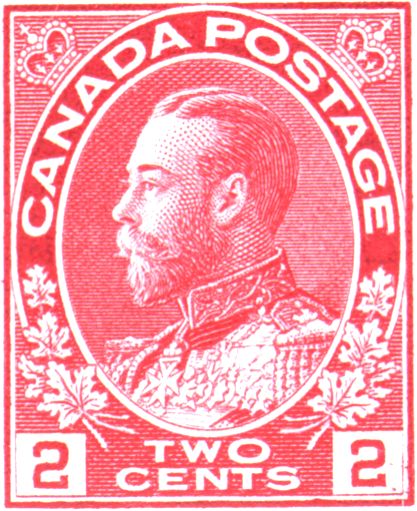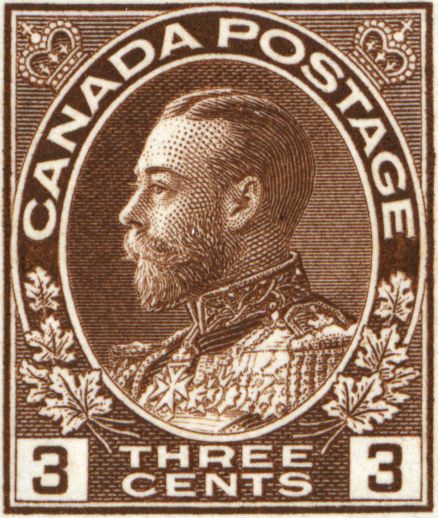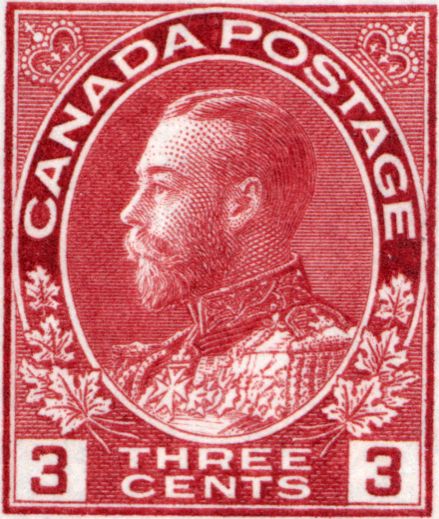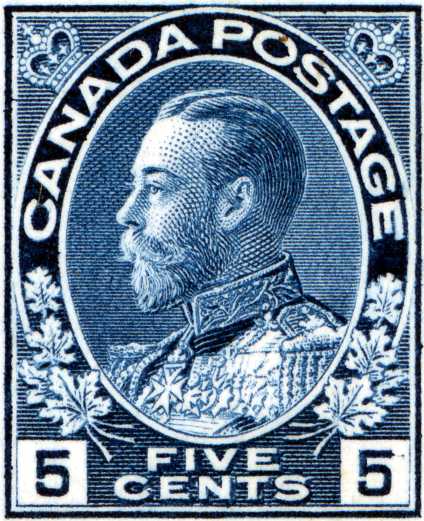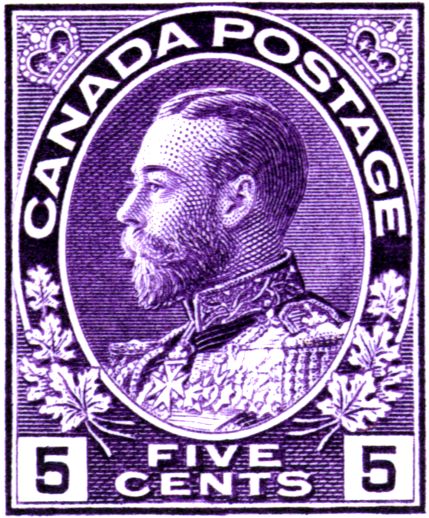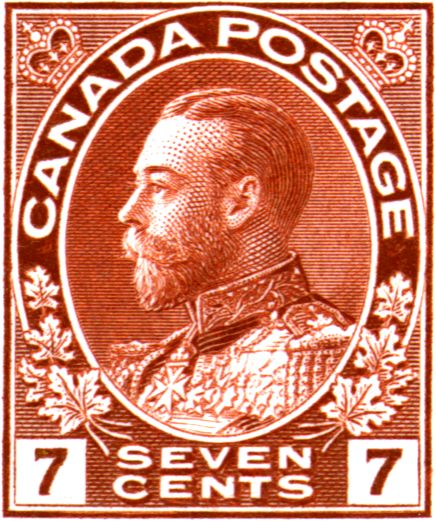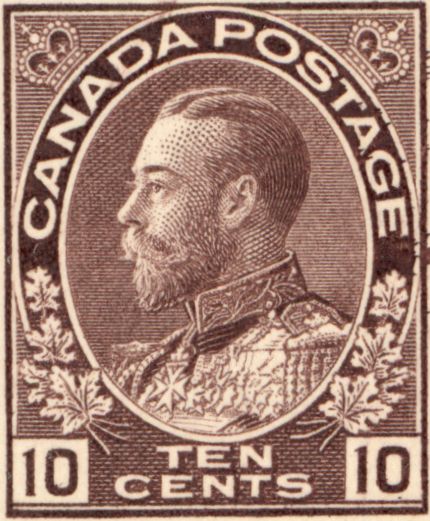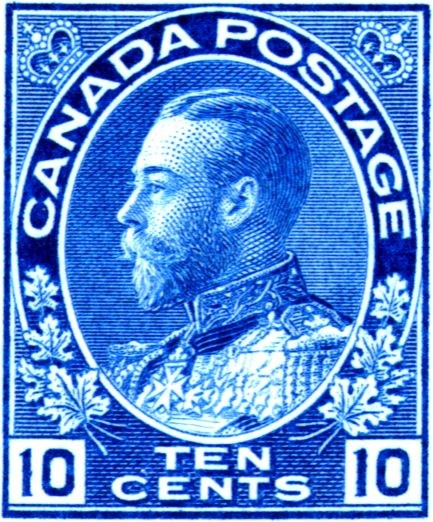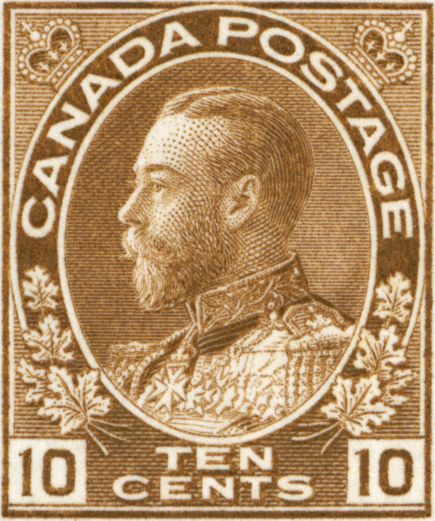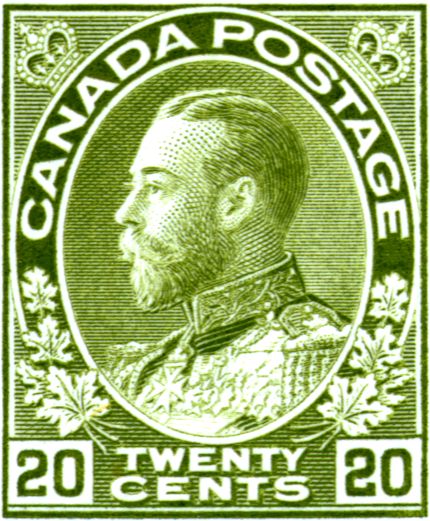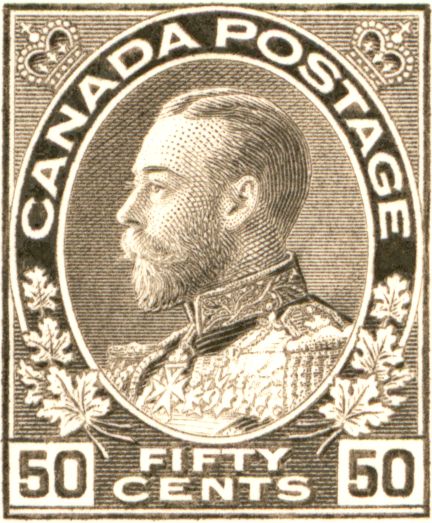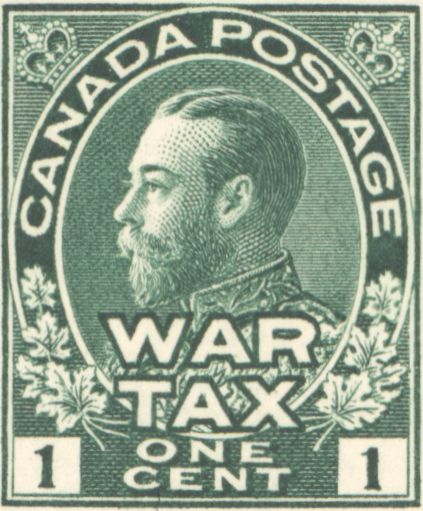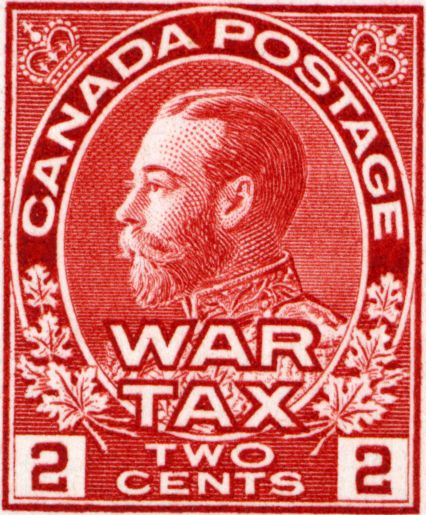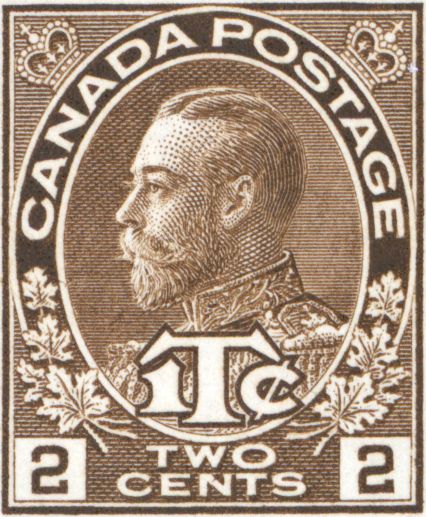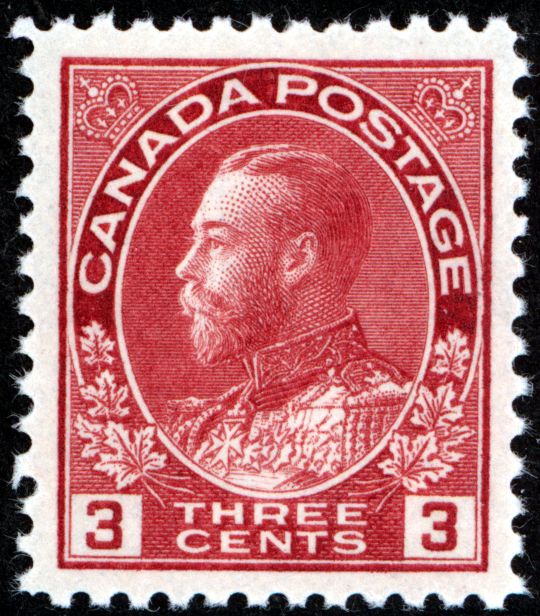
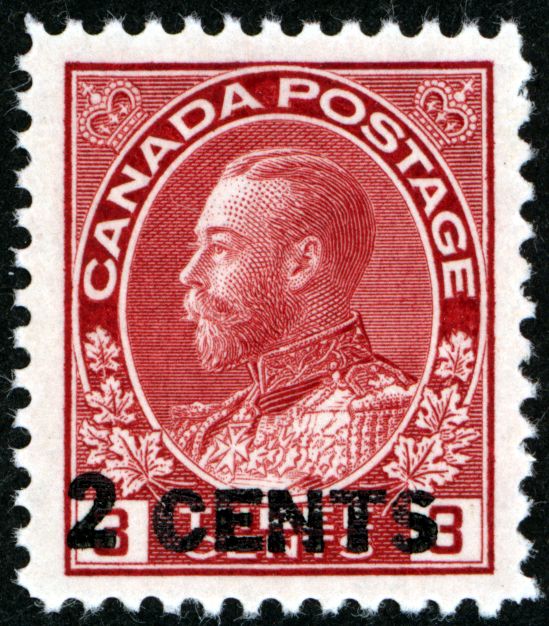
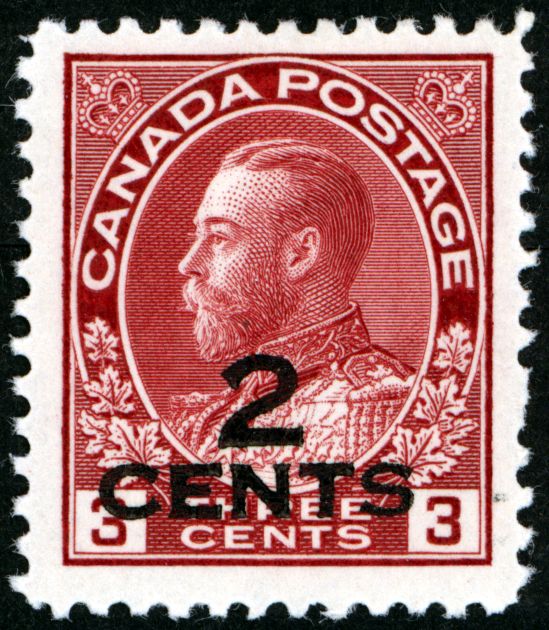
In column 2 of the table, the heading "PO" stands for Printing Order. Beginning in February 1911, near the end of the KE VII period, until March 1915, the printing order number was hand punched on the plate, usually near the plate imprint. In March 1915, it was engraved on the plate in the pane selvedge above and/or below column 9 or 10. If a plate was used for more than one printing order, the old number was defaced and the new one punched in. In the table, only the number that is not defaced is listed.
Beginning with the 2¢ carmine in November 1915, the "printing order number" consisted of a number that indicated the stamp denomination and issue format (sheet, coil, or booklet) and one or two letters that indicated the printing order. The number did not change and the letters were not defaced. The PO column of plates with this new numbering scheme is greyed out.
In the three "Upper" and "Lower" columns, the size of each item is indicated by a letter and number. The letter indicates the configuration:
- ► S = Strip
- ► B = Block
The number following the letter is the number of stamps in the strip or block. If there are multiple items of the same size, the size is in parentheses, and the number preceding the parentheses is the number of items. For example, 4(B8) indicates that there are four blocks of 8 of a certain item. S1 indicates a "strip" consisting of a single stamp. B100 is a complete pane.
A grey cell indicates that the item does not exist. A light blue cell indicates that no material from the plate was reported in this census.
| Plate | PO | Wet Dry |
Total | Upper | Upper Left | Upper Right | Lower | Lower Left | Lower Right |
|---|---|---|---|---|---|---|---|---|---|
| 115 | D | 12 | 6(S4),B6,3(B8),B10 | B20 | |||||
| 116 | D | 9 | 4(S4),3(B8) | S10 | S10 | ||||
| 117 | D | 13 | 5(S4),5(B8) | S10 | 2(B20) | ||||
| 118 | D | 0 | |||||||
| 119 | D | 0 | |||||||
| 120 | D | 0 | |||||||
| 121 | D | 15 | S3,3(S4),S10, 6(B8),2(B10),B20 |
B20 | |||||
| 122 | D | 12 | S4,7(B8),B12 | 2(S10) | B20 | ||||
| 123 | D | 4 | S4,2(B8) | B20 | |||||
| 124 | D | 6 | 3(S4),B8 | S10,B20 | |||||
| 125 | D | 4 | S4,2(B8) | B8 | |||||
| 126 | D | 4 | 3(B8) | B20 | |||||
| 127 | D | 2 | 2(B8) | ||||||
| 128 | D | 3 | 2(S4),B8 | ||||||
| None | D | 1 | S10 | ||||||
| 129 | D | 2 | B6,B8 | ||||||
| 130 | D | 1 | S10 | ||||||
| 131 | D | 1 | B6 | ||||||
| 132 | D | 3 | 2(S4),B8 | ||||||
| 133 | D | 3 | 2(S4),B8 | ||||||
| 134 | D | 2 | S3,S4 | ||||||
| 135 | D | 12 | 4(S4),B4,5(B8) | 2(B20) | |||||
| 136 | D | 18 | 4(S4),10(B8),B12 | S10 | S10,B18 | ||||
| 137 | D | 13 | S4,B6,4(B8),B10,B12 | B8,B56 | B8,2(B20) | ||||
| 138 | D | 4 | 3(B8) | B20 | |||||
| 139 | D | 4 | 3(S4) | B20 | |||||
| 140 | D | 1 | B8 | ||||||
| 141 | D | 2 | S4,B8 | ||||||
| 142 | D | 1 | B8 | ||||||
| 143 | D | 1 | S4 | ||||||
| 144 | D | 1 | S3 | ||||||
| 145 | D | 1 | S4 | ||||||
| 146 | D | 0 | |||||||
| 147 | D | 0 | |||||||
| 148 | D | 1 | S10 | ||||||
| 149 | D | 1 | S4 | ||||||
| 150 | D | 2 | S4 | S4 | |||||
| 151 | D | 2 | S4,S5 | ||||||
| 152 | D | 1 | S4 | ||||||
| 153 | D | 0 | |||||||
| 154 | D | 0 | |||||||
| 155 | D | 0 | |||||||
| 156 | D | 2 | S5 | S10 | |||||
| 157 | D | 3 | B8 | S10 | S4 | ||||
| 158 | D | 2 | S4 | S10 | |||||
| 159 | D | 1 | S4 | ||||||
| 160 | D | 1 | B8 | ||||||
| 161 | D | 1 | B8 | ||||||
| 162 | D | 4 | S3,B4,B8 | S10 | |||||
| 163 | D | 5 | S4,2(B4),B8 | S10 | |||||
| 164 | D | 4 | 2(S4),B4,B6 | ||||||
3¢ carmine imperforate |
|||||||||
| 126 | D | 13 | S3,4(B8),5(B12),B20 | B14,B20 | |||||
| 127 | D | 11 | S4,3(B8),3(B12),B20 | S10 | B18,B20 | ||||
| 128 | D | 9 | S2,S4,B8,3(B12), B14,B20 |
B50 | |||||
| 129 | D | 1 | B12 | ||||||
| 130 | D | 6 | B12,B20 | B12,B20 | B16,B20 | ||||
| 131 | D | 3 | 2(B8),B12 | ||||||
3¢ carmine overprinted 2¢ in one line |
|||||||||
| 115 | D | 9 | S5,B6,4(B8),B12 | B20 | B20 | ||||
| 116 | D | 10 | 2(S4),8(B8) | ||||||
| 117 | D | 8 | S2,B6,3(B8) | B18,B20 | B20 | ||||
| 162 | D | 1 | B8 | ||||||
| 163 | D | 1 | B6 | ||||||
3¢ carmine overprinted 2¢ in two lines |
|||||||||
| 115 | D | 16 | S3,S4,S6, 3(B6),5(B8) |
2(B8),B12 | 2(B20) | ||||
| 116 | D | 11 | 2(S4),3(B6),3(B8) | B8,2(B20) | |||||
| 117 | D | 9 | S4,B6,5(B8) | 2(B20) | |||||
| 135 | D | 1 | B6 | ||||||
| 136 | D | 1 | B6 | ||||||
Perf 12 x 8 coil stamp issued in sheet format on 24 June 1931 |
|||||||||
| 13 | D | 23 | 2(S4),12(B8),B20 | 2(B8),B20 | S10,B8,3(B20) | ||||
| 14 | D | 25 | S4,13(B8),B20,B50 | B8,B20 | S10,B8,B10,B12, B14,B16,B20 |
||||
| 15 | D | 21 | 2(S4),10(B8),B10,B12 | S10,B8,B12,B20 | B8,B16,B20 | ||||
Notes:
- Plates 118 to 124: the lower panes have lathework in the bottom margin and plate imprints below the lathework. The plate imprints were trimmed off the panes issued to post offices.
- Plates 125 to 128: the upper panes do not have plate imprints. The lower panes have lathework in the bottom margin and plate imprints above the lathework. Thus the lower panes issued to post offices come with plate imprints and lathework. The row with "None" specified for the plate number refers to these plates. A strip or block with ten stamps across from an upper pane with no plate imprint must come from one of these plates.
- Plates 129 to 164: the lower panes do not have lathework or plate imprints in the bottom margin.
- Printing order number: set to "944" with two letters appended on plates 115 to 164; set to 945 with the letter "Y" appended on coil plates 13 to 15.
-
3¢ carmine overprinted 2¢ in one line
T. R. Legault, an official of the Post Office Dept., prepared First Day Covers of this stamp with imprint blocks of six from plates 115 and 163. -
3¢ carmine overprinted 2¢ in two lines
T. R. Legault prepared First Day Covers of this stamp with imprint blocks of six from the following plates (number of FDCs recorded in parentheses): 115 (3), 116 (2), 117 (1), 135 (1), and 136 (1). The only known two-line overprint blocks with plate imprints 135 and 136 are the ones on the FDCs. No mint plate imprint blocks from these two plates have been reported. - In his 1982 book, Marler lists the following plates whose existence had not been reported: 142 [p. 521], 145 – 146 [p. 522], 153 – 155 [p. 518], 165 – 176 [p. 519]. However, this census received reports of plates 142 and 145, and plate 146 was offered in a 1980 J. N. Sissons Inc. auction (Sale 407, 14 Aug. 1980, lot 343).
- Marler was unaware of the existence of the 3¢ carmine from plates 118–120; however, lot 756 in the 1990 Maresch auction of the Jephcott collection consisted of a block from each plate (R. Maresch & Son, Sale 239 – 243, 19–21 June 1990).
-
In 2013, Charles Séguin published a census of plate imprint material from plates 129-131 of the
imperforate 3¢ carmine based on a survey of auctions, dealer price lists, and collections ("Census
of 3¢ Carmine Imperforate, Plates 129-131", The Admiral's Log, Vol. XIII, No. 1,
Dec. 2013). The table summarizes his findings.
Census of 3¢ carmine imperforate, plates 129-131
Plate UL pane UR pane Total 129 2 4 6 130 5 6 11 131 4 2 6 Total 11 12 23
Copyright © 2015 - 2026 The British North America Philatelic Society.
The documents on this website are for informational and non-commercial or personal use only.
Documents on this website shall not be used on other websites or for
commercial purposes without permission.
This page was last modified on 2023-06-04
